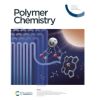Kolejne obiecujące zastosowanie katalizatora Apeiron – AquaMet opublikowane w czasopiśmie „Polymers”
Badania przedstawione w publikacji “Optimization of Ring-Opening Metathesis Polymerization (ROMP) under Physiologically Relevant Conditions” miały na celu dostosowanie warunków metatetycznej polimeryzacji z otwarciem pierścienia w taki sposób, aby była możliwa do zastosowania do syntezy koniugatów komórka-polimer i białko-polimer, mających zastosowanie jako składniki nowych biologicznych związków terapeutycznych. Church i współpracownicy zdecydowali się użyć naszego komercyjnie dostępnego, rozpuszczalnego w wodzie katalizatora – AquaMet oraz podjęli próbę optymalizacji warunków reakcji, takich jak stężenie chlorków i pH, w celu zwiększenia wydajności ROMP w czystej wodzie.
Praca ta udowodniła, że skuteczna polimeryzacja w wodzie, charakteryzująca się szybką inicjacją i wysokim stopniem konwersji monomeru jest możliwa do osiągnięcia nawet w temperaturze pokojowej, w pH zbliżonym do fizjologicznego i bez użycia współrozpuszczalników organicznych. Dodatkowo autorzy wykazali, że dodatek chlorków wywiera istotny wpływ na polimeryzację w środowisku wodnym, zapewniając wysoki stopień konwersji monomerów i pozwalając uzyskać polimery o dobrze kontrolowanej masie cząsteczkowej.
Mamy nadzieję, że wnioski te okażą się istotnym krokiem w kierunku wykorzystania „wodnej” ROMP w warunkach biologicznych – w obecności komórek, peptydów, białek, czy w przypadku pracy z grupami funkcyjnymi wrażliwymi na obecność kwasu.
Jeśli chcesz dowiedzieć się więcej, zapraszamy do odwiedzenia strony:
https://pubs.rsc.org/en/content/articlelanding/2020/PY/D0PY00716A#!divAbstract



